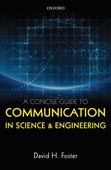Current Research Topics
The research summarized here involves instrumentation, computational processing, mathematical and statistical modelling, and applications to machine and biological vision systems. Please see the publications list here for more recently reported work.
1. Hyperspectral imaging methods
Hyperspectral images provide both spatial and spectral representations of scenes, materials, and sources of illumination. They differ from images obtained with a conventional RGB colour camera, which divides the light spectrum into broad overlapping red, green, and blue image slices that when combined seem realistic to the eye. By contrast, a hyperspectral camera effectively divides the spectrum into very many thin image slices, the actual number depending on the camera and application [1]. This fine-grained slicing reveals spectral structure that may not be evident to the eye or to an RGB camera but which does become apparent in a range of optical and visual phenomena [2] [3].
Current applications work is concerned with the acquisition and analysis of time-lapse hyperspectral image of natural scenes undergoing natural illumination changes [4] and of the remote analysis of local illuminant spectra in natural scenes [5]. These kinds of data provide a defintive test of colour-processing algorithms for surface identification, scene characterization, and object tracking. A new higher-resolution hyperspectral imaging system is in preparation.
1. Foster, D. H. & Amano, K. (2019) Hyperspectral imaging in color vision research: tutorial. Journal of the Optical Society of America A 36, 606-627. See also tutorial on transforming hyperspectral images here.2. Foster,
D.H. et al.
(2006). Frequency of metamerism in natural scenes. Journal of the Optical
Society of America A, 23, 2359-2372.
4. Foster, D.H., et al.. (2016). Time-lapse ratios of cone excitations in natural scenes. Vision Research, 120, 45-60.
5. Nascimento, S.M.C., et al. (2016). Spatial distributions of local illumination color in natural scenes. Vision Research, 120, 39-44.
2. Information-theoretic applications in colour-image processing
Measures of uncertainty drawn from Shannon's information theory allow the relationship between images of a scene taken under different illumination conditions to be compared in a nonparametric way. This technique has been used to compare the practical use of digital-camera sensors [6] and estimate the efficiency of different colour codes [7]. It has a range of other applications including predicting the frequency of colour aliasing (metamerism) in scenes [8], limits on the retrieval of information from scenes [9], and estimating the number of distinguishable surfaces in scenes [10]. Current work is concerned with the limits on surface-colour invariances in natural scenes.
6. Marín-Franch, I., and Foster, D.H. (2013). Estimating information from image colors: An application to digital cameras and natural scenes. IEEE Transactions on Pattern Analysis and Machine Intelligence, 35, 78-91.
7. Foster, D.H., & Marín-Franch, I. (2008). Coding efficiency of cie color spaces. In: Sixteenth Color Imaging Conference, CIC16 (pp. 285-288). Portland, Oregon: Society for Imaging Science and Technology.8. Feng, G., & Foster, D.H. (2012). Predicting frequency of metamerism in natural scenes by entropy of colors. Journal of the Optical Society of America A - Optics Image Science and Vision, 29, A200-A208.
9. Foster, D.H. et al. (2009). Approaching ideal observer efficiency in using color to retrieve information from natural scenes. Journal of the Optical Society of America A, 26 (11), B14-B24.
10. 9. Marín-Franch, I., & Foster, D.H. (2010). Number of perceptually distinct surface colors in natural scenes. Journal of Vision, 10(9):9
3. Engineering approaches to biological vision
Opto-electronic imaging of the eye and real-time control of high-resolution image displays can be used in experiments to test limits on processing in the human eye and brain. Detection performance and regularities in apparently random patterns of eye movements have been revealed as observers search for targets in images of natural scenes [11] [12]. Previous research has been concerned with changes in vision in the eyes of individuals with defective photoreceptors [13] and with the development of model-free statistical methods for analysing eye-movement data [14]. Current work is concerned with search, detection, and identification in natural scenes [15].
11. Amano, K., & Foster, D.H. (2014). Influence of local scene color on fixation position in visual search. Journal of the Optical Society of America A, 31 (4), A254-A262.
12. Amano, K. et al. (2012). Visual search in natural scenes explained by local color properties. Journal of the Optical Society of America A, 29, A194-A199.
13. Carroll, J. et al. (2009). Cone photoreceptor mosaic disruption associated with Cys203Arg mutation in the M-cone opsin. Proceedings of the National Academy of Sciences, 106 (49), 20948-20953.
14. Mould, M.S., et al. (2012). A simple nonparametric method for classifying eye fixations. Vision Research, 57, 18-25.
15. Foster, D. H. (2018). The Verriest Lecture: Color vision in an uncertain world. Journal of the Optical Society of America. A 35, B192-B201.
A Concise Guide to Communication in Science & Engineering
 |
|
|
| Published by Oxford University Press, 2017/18, 408 pages. ISBN: 9780198704249. Available as hardback, paperback, or ebook. | ||